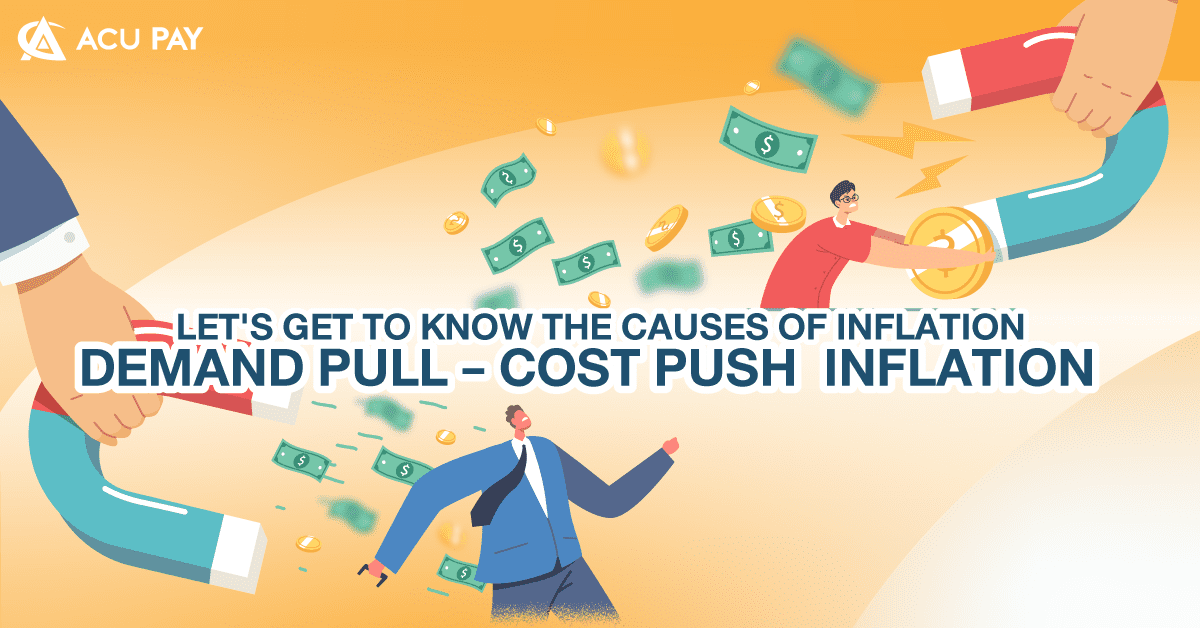

It’s undeniable that today’s inflation has a huge impact on many sectors because it’s like we’re going to buy the same store, the same stuff, and pay the same amount. But the seller said that they had to add more money. Or, on the other hand, buy from the same store. and pay the same amount. When we walked out, we had to turn around and ask why we got less. This is all caused by inflation.
If we translate directly, it is like we extract resources according to our needs. Therefore, demand pull inflation is inflation caused by the demand for goods and services increasing more than the products and services available in the market at that time, causing sellers to adjust prices of goods and services higher. However, the increasing demand pull is due to the following reasons:
If we translate directly, cost-push inflation is a pass-through of costs, which is the cost on the producer’s side. Therefore, cost-push inflation is the inflation caused by the rising cost of production. That is, if the producer cannot bear the higher cost burden, the producer will have to adjust the prices of goods and services. There are several reasons for the increase in production costs, including:
If you look at the big picture in both the United States and Thailand, you can see the main problems as follows.
The price of goods has increased since the opening of the city. where demand increases but the quantity of goods is insufficient or scarce due to the city shutdown, such as the price of old cars, hotel costs, and plane tickets. This has increased to a very high level but has started to show some signs of improvement. This problem will occur in countries that have almost completely opened their cities, such as the United States. In Thailand, it is still considered not to encounter much of this problem.
Demand-side problems are caused by overheating economies from stimulus, tight labor markets, and pressure from rising wages. Raised inflation expectations as inflation has held high for a long time and the “narrative” of inflation has caused entrepreneurs to pass more costs to consumers.
Oil prices and energy prices the rise from the war and European sanctions on Russia directly affect the world’s oil supply. And the war has caused food prices to rise because it affects food exports. and fertilizers that must be produced from petroleum. One of the countries with high petroleum production is Russia. Another impact is on the cost of agriculture. It has a significant impact on farmers because if they are not using fertilizer, their productivity is lower. If used, the cost is higher. Therefore, no matter which way you choose, it will make it higher in every way. which is also having an impact on Thailand.
Supply disruption caused by short-term issues such as a shortage of containers, ships, truck drivers, China’s zero COVID policy, and production costs that make the product more expensive. including house prices that increased even though sales began to decline. and long-term problems such as geopolitical conflicts, population structure, and the stability of the supply chain that led to the relocation of production bases, leading to higher costs.
We will notice that 1-2 is a problem of demand-pull inflation; 3-4 is a problem of cost push inflation.
If the problem comes from demand-pull inflation alone, the policy rate adjustment will be quite effective. But this time there was cost-push inflation involved. And Thailand has quite a serious problem with cost-push inflation. Therefore, if we raise the policy interest rate, it will affect the manufacturer directly. Whether in the business or agricultural sectors, this will increase the financial costs of these producers. But the cost of oil fell as well. did not increase agricultural productivity. Fertilizers did not decrease. Therefore, we may not see a policy rate hike in Thailand at this time.
Everyone can follow ACU PAY Thailand through other tracking channels.